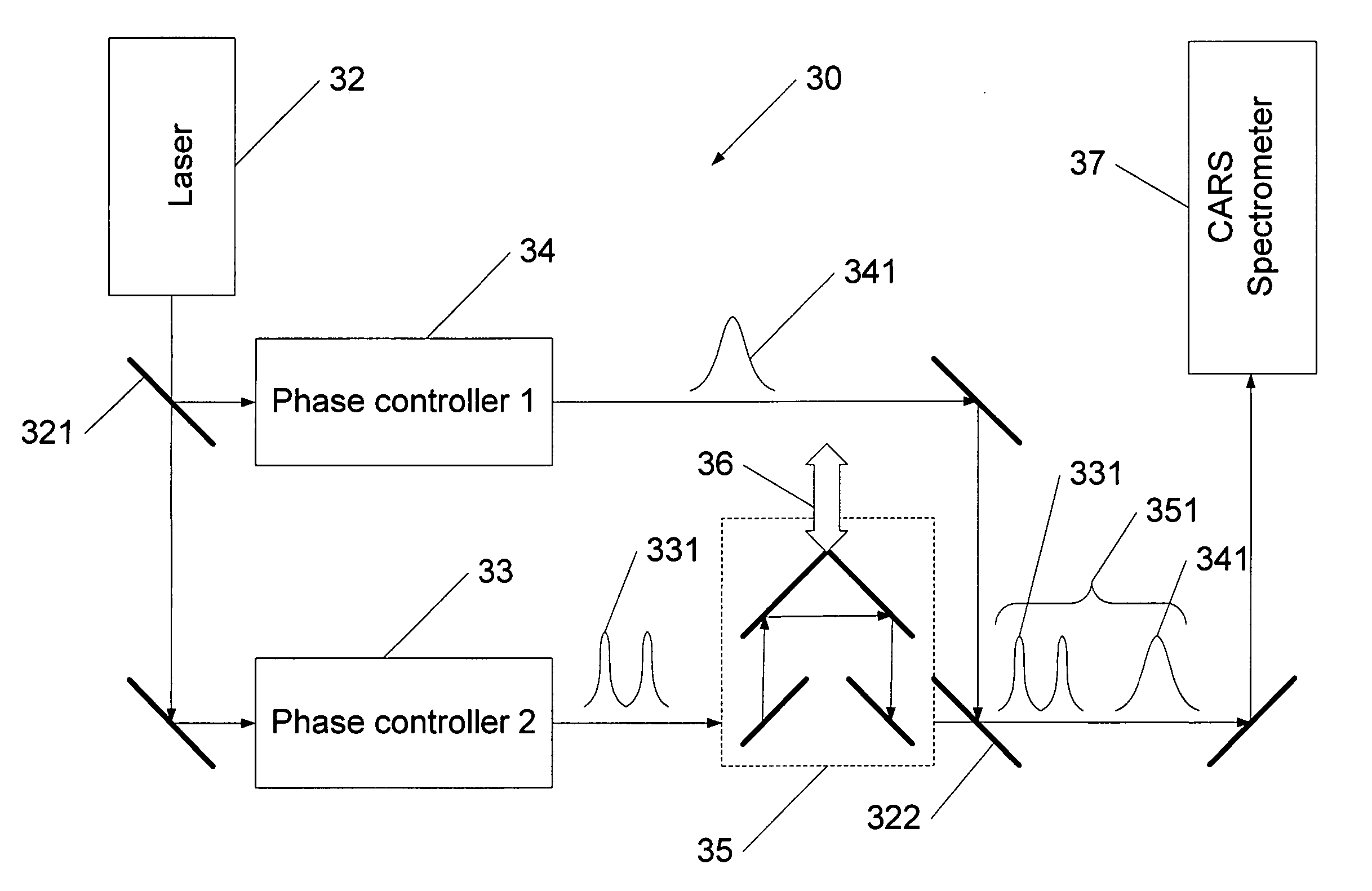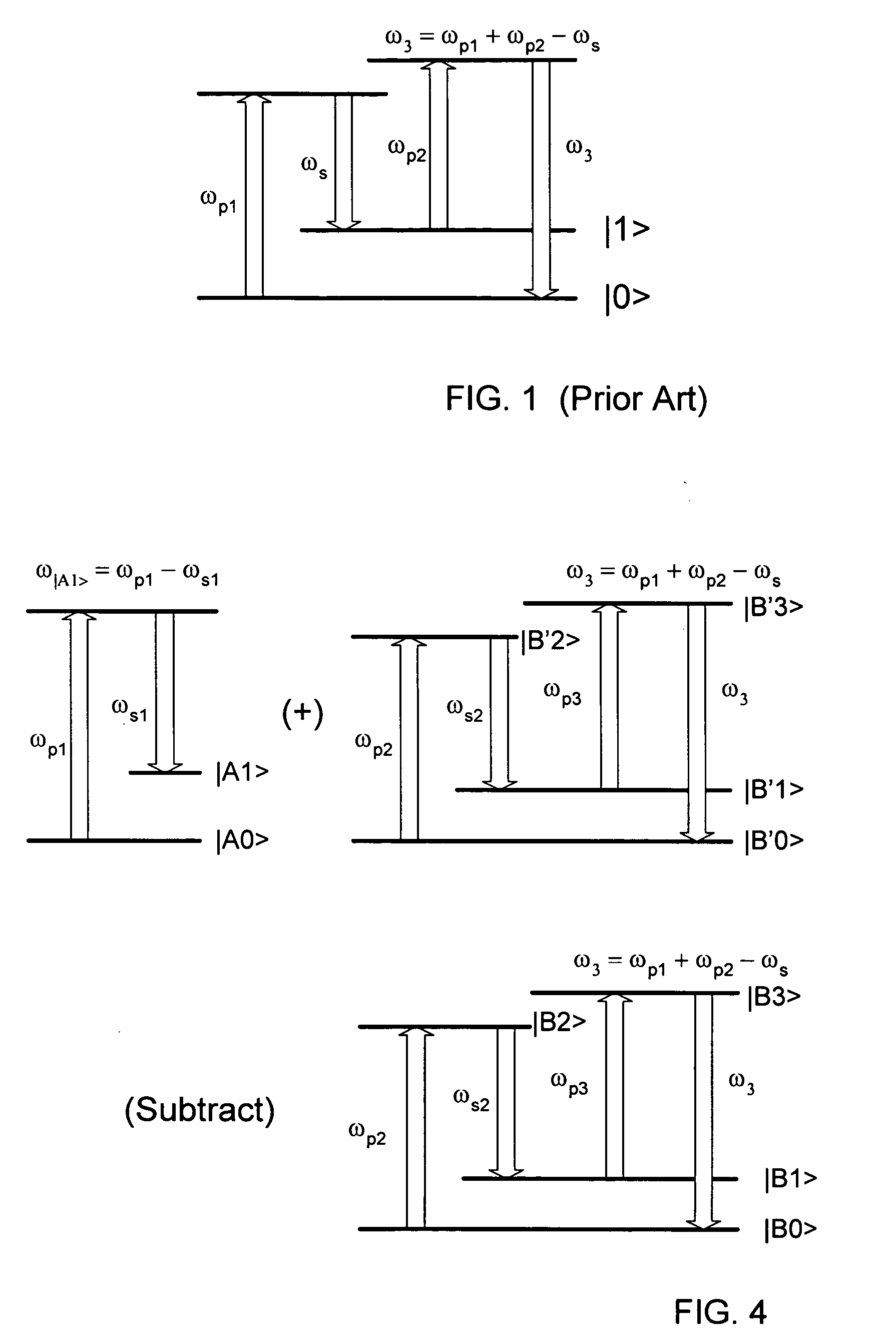Method and system for spectral analysis of biological materials using stimulated cars
a technology of spectral analysis and stimuli, applied in the field of laser spectroscopy, can solve the problems of low scattering efficiency 10sup>6 /sup> for non-organism molecules, difficult to determine the association between the measured spectra and the molecules of interest, etc., and achieve the effect of facilitating the analysis of the bond structure and enhancing the response signal of cars
- Summary
- Abstract
- Description
- Claims
- Application Information
AI Technical Summary
Benefits of technology
Problems solved by technology
Method used
Image
Examples
Embodiment Construction
[0025] Referring now to FIG. 3, in a CARS laser system 30, a femtosecond or sub-picosecond laser pulse from a laser 31, preferably a mode-locked laser having a mode-locker 311, (or a plurality of lasers 31, 31′ having mode-lockers 311, 312, which can be synchronized) is directed by suitable optical components, such as mirrors, prisms, etc., onto a partially reflecting mirror 321 which splits the beam into two parts. By using two or more synchronized, for example, passively or actively mode-locked, lasers 31, 31′, a wider spectral range of the stimulus pulse 341 and the probe pulse 331 can be covered, as will be described below.
[0026] A first part of the laser pulse is spectrally phase-modulated by a first phase / polarization controller 34, which can be implemented using optical components similar to those of phase controller 24 depicted in FIG. 2, such as a first dispersion grating, a spectral phase and polarization modulator, for example, a liquid crystal array, followed a second d...
PUM
 Login to View More
Login to View More Abstract
Description
Claims
Application Information
 Login to View More
Login to View More - R&D
- Intellectual Property
- Life Sciences
- Materials
- Tech Scout
- Unparalleled Data Quality
- Higher Quality Content
- 60% Fewer Hallucinations
Browse by: Latest US Patents, China's latest patents, Technical Efficacy Thesaurus, Application Domain, Technology Topic, Popular Technical Reports.
© 2025 PatSnap. All rights reserved.Legal|Privacy policy|Modern Slavery Act Transparency Statement|Sitemap|About US| Contact US: help@patsnap.com



